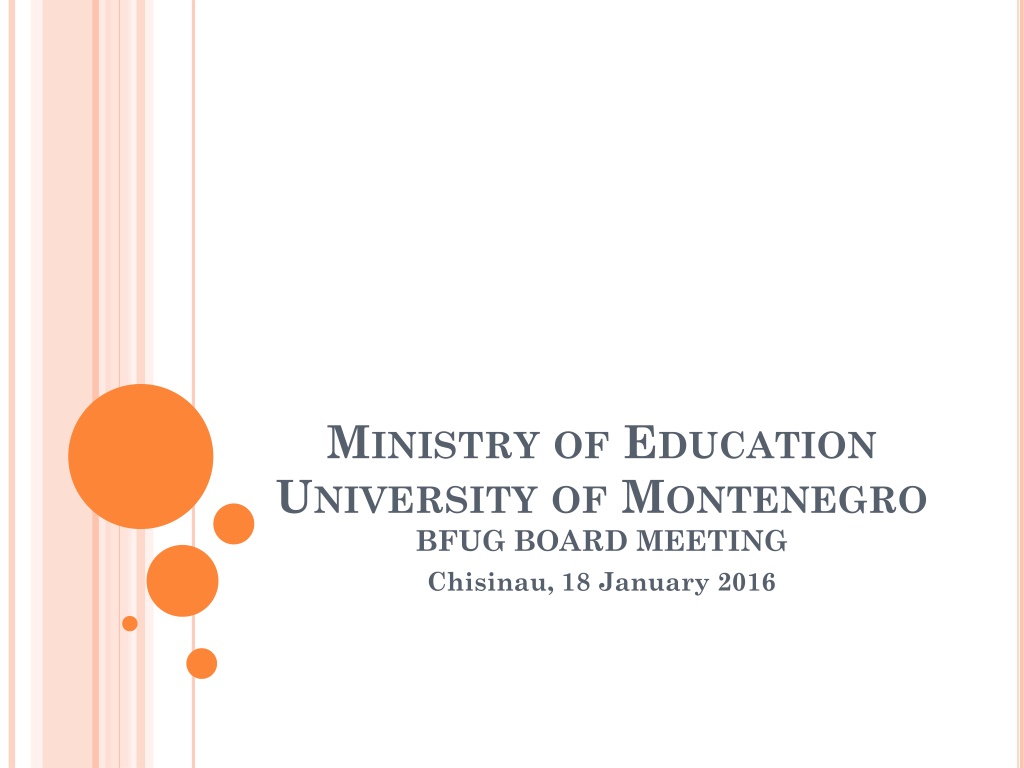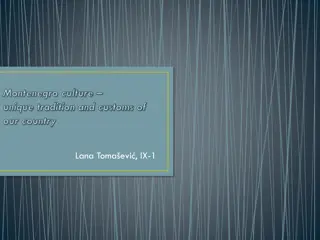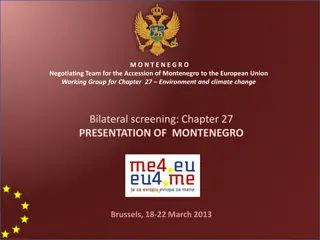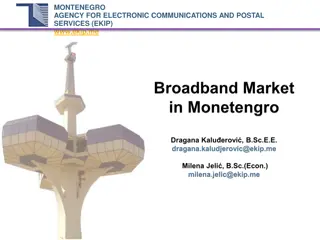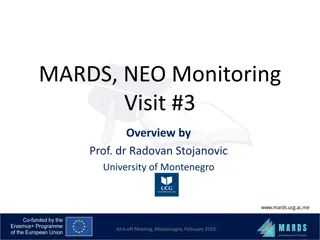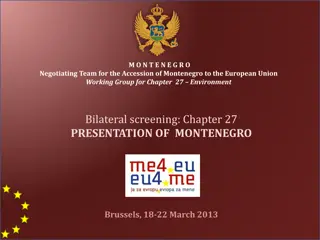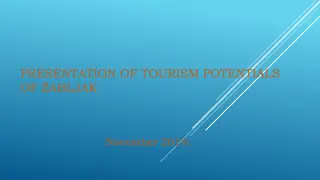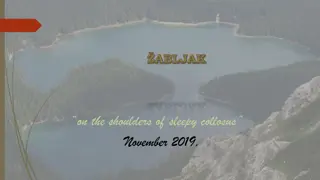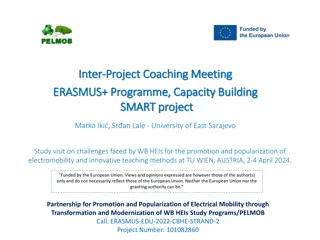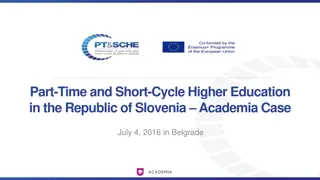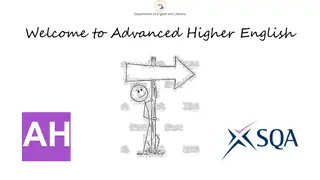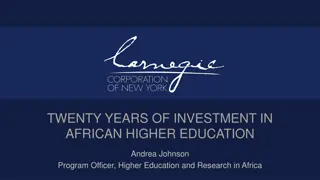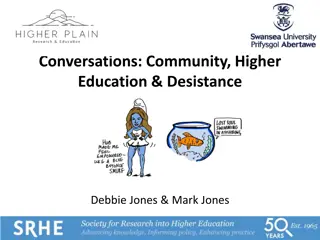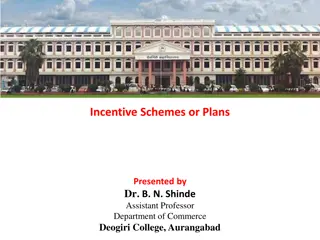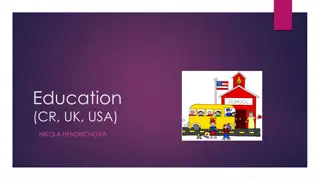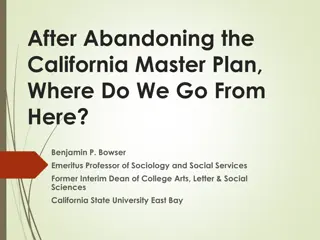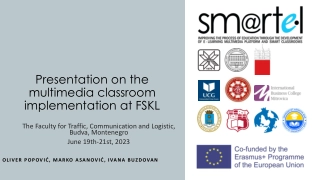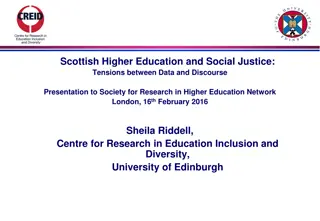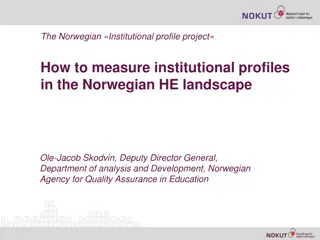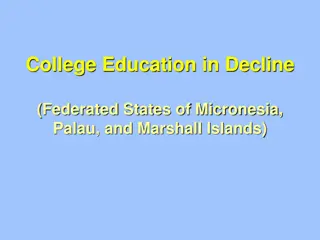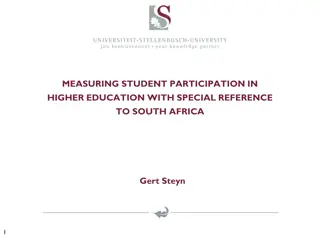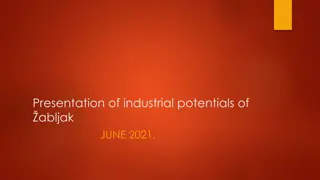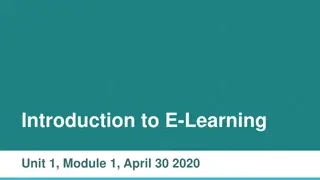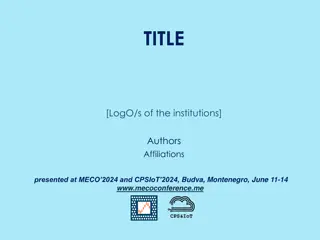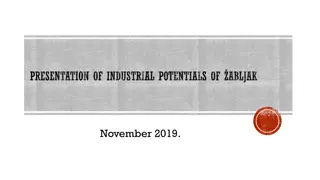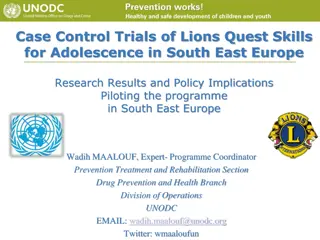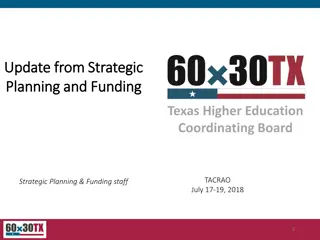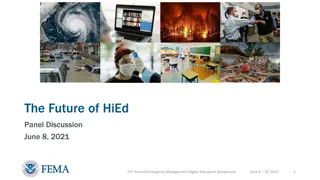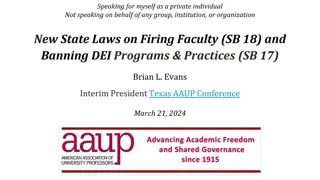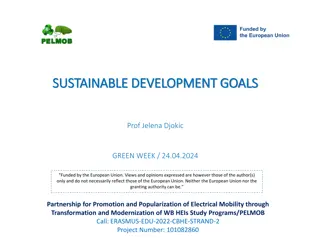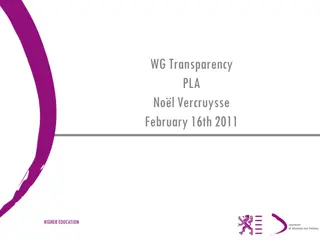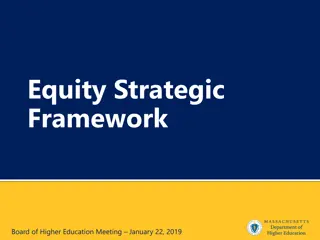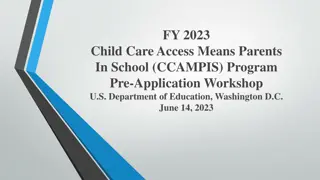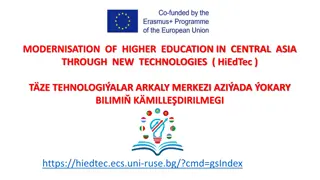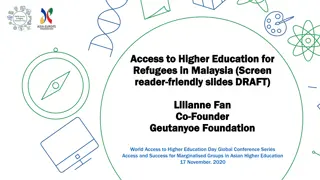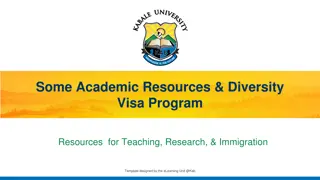Education System and Higher Education in Montenegro
Montenegro's educational system encompasses various levels of education including preschool, primary, secondary, vocational, and tertiary education. The Ministry of Education oversees the entire educational sector with a budget allocation of 4.2% of GDP. Higher education is provided by universities and other institutions, with legislation in place to regulate areas such as recognition of foreign credentials and enrollment policies. Montenegro's census data from 2011 provides insights into the population, households, and dwellings in the country.
Download Presentation

Please find below an Image/Link to download the presentation.
The content on the website is provided AS IS for your information and personal use only. It may not be sold, licensed, or shared on other websites without obtaining consent from the author. Download presentation by click this link. If you encounter any issues during the download, it is possible that the publisher has removed the file from their server.
E N D
Presentation Transcript
MINISTRY OF EDUCATION UNIVERSITY OF MONTENEGRO BFUG BOARD MEETING Chisinau, 18 January 2016
MONTENEGRO Montenegro (Montenegrin: Crna Gora), is located in South-Eastern Europe Capital city Podgorica Total area 13,812 km2 Population 620,029 inhabitants
ECONOMY Agricultural processing Aluminium Tourism
MONTENEGRINEDUCATIONALSYSTEM Montenegrin educational system includes preschool education, primary education, secondary general education (gymnasium), vocational education, upbringing and education of persons with special needs, upper secondary non tertiary education, adult education and tertiary education. The Ministry of Education is responsible for the entire field of education. Budgetary allocations for education is 4,2% of GDP Total budget of the Ministry of Education, in accordance with the Law on Budget 2016, is 142.775.860,41 mil Total budget of the University of Montenegro, in accordance with the Law on Budget 2016, is 16.857.228,10 mil
HIGHER EDUCATION Higher education is being implemented by universities and other institutions of higher education
LEGISLATION Law on Higher Education Law on Recognition of Foreign Credentials and Equivalence of Qualifications Law on National Qualifications Framework Enrolment Policy at the University of Montenegro Law on Professional Training for Persons with acquired Higher Education Decree on Norms and Standards for Financing of public HEIs and Financing of Students at HEIs Strategy on Development and Financing of Higher Education 2011- 2020 Rulebook on procedures of qualification development from sixth to eight qualification levels
CENSUSOF POPULATION, HOUSEHOLDSAND DWELLINGSIN MONTENEGRO 2011
CENSUSOF POPULATION, HOUSEHOLDSAND DWELLINGSIN MONTENEGRO 2011
CURRENTSITUATION The Law on Higher Education was adopted by the Parliament in 2003 Changes and amendments done in 2010, 2011 New Law was adopted in October 2014 Rapid growth of HE sector after 2003 Change of the number of HEIs from only one public university in 2003 to two private universities, 9 individual private faculties and one individual public faculty in 2015
CURRENTSITUATION Higher education may be provided by the universities and higher education institutions, which are licensed and accredited in accordance with the Law According to this Law, higher education is an activity of public interest which provides obtaining a degree of: applied undergraduate studies academic undergraduate studies applied specialist studies academic specialist studies applied master studies academic master studies and academic title of a PhD.
THECURRENTSITUATIONWITHREGARDSTOTHE FINANCING & ACCESSTO HE IN MONTENEGRO 75 % of students pay tuition fee at public university, self-financed 25% of students at public university are budget financed 98 % of students at private HEIs pay tuition fee Tuition fee at public university is 500 /year mostly, at some study programs is 1.000 /year Tuition fee at private HEIs is from 1.200-1.600 /year Average cost per budget financed student at UoM is 3.631
THECURRENTSITUATIONWITHREGARDSTOTHE FINANCING & ACCESSTO HE IN MONTENEGRO In accordance with Law it is possible to allocate funds from the budget of Montenegro to students of private institutions attending study programmes of public interest that are not implemented at any public institution Criteria for determining the study programmes of public interest at private institutions that are not implemented at any public institution are prescribed by the Government, following the opinion provided by the Council For Higher Education.
FUNDING An institution may be financed from the following sources: founder s assets; tuition fees and other fees paid by the students; intellectual and other services; donations, presents and legacies; income from property (lease); projects and contracts with international, national and private entities aimed at promotion of teaching, research and consulting activities; and other sources in compliance with law.
ADMISSION INTO A STUDY PROGRAMME Students are admitted at a competitive basis, all in compliance with the results obtained during secondary school education, at the professional or matriculation exam and the results obtained at the additional or admission exam For enrolment to certain study programmes, an admission exam may be introduced The matriculation, or professional exam is valued with at least 15% of the total number of points obtained at admission More detailed conditions and criteria, method and procedure of enrolment to first year of undergraduate academic and applied studies is prescribed by the Ministry, following the prior opinion of the Council. For persons with disabilities the principle of affirmative action is conducted on the occasion of enrolment to a study programme. A student with a disability is entitled to take an exam in a manner adjusted to their educational needs in compliance with statute of an institution. A foreigner is entitled to be enrolled into study programmes in Montenegro, under the same conditions as Montenegrin citizens, in compliance with this Law and statute of an institution.
RIGHTS PERTAININGTO STUDENT STANDARD A student is entitled to: dormitory room and board; students loan; scholarships for best students; transport allowance concerning suburban and intercity traffic; health care in compliance with special law; establish sport associations in accordance with law. The criteria, manner, conditions and the amount of fee for exercising are prescribed by the Ministry.
NUMBEROFSTUDENTSTAKINGSTUDENTLOANS, SCHOLARSHIPFOR TALENTEDSTUDENTS, STUDENTS HOSTELACCOMMODATION 13.66% of Montenegrin students are using students` loans Till 2011/2012 year, only budget students were entitled to apply for scholarships and loans From 2011/2012 year onwards, rights ensuring from students standards can use all students that fulfill prescribed conditions Scholarships are given to the best students , students with highest marks and special affinity towards scientific/artistic work, and who were rewarded prizes at state and international competitions. Total number of this category of students is 300. Accommodation in students hostel is provided for 1.897 students
WORLD BANK LOAN Aim of the HERIC project (Higher Education and Research for Innovation and Competitiveness Project) financed by WB loan is to strengthen the quality and relevance of higher education and research in Montenegro through reforming the higher education finance and quality assurance systems and by strengthening research and development capabilities. Component 1 Higher Education Finance Reforms and Implementation of Quality Assurance Norms Component 2 Human Capital Development through Internationalization Initiatives Component 3 Establishing a Competitive Research Environment Component 4 Project Management and Monitoring and Evaluation Total budget is 12 million
PROFESSIONAL TRAININGFOR PERSONSWITHACQUIRED HIGHER EDUCATION Law adopted in July 2012 Professional training is dedicated to the persons holding higher education degree without working experience in concrete educational level and recorded at the Employment Bureau evidence; Professional training is in duration of 9 months recognized as 12 months of working experience enabling individuals to pass professional exam Relevant partners: employers (public, private), higher education institutions, graduates The goal of this Programme is to provide support to university graduates in order to obtain adequate practical knowledge
ASSESSMENTOFTHENEEDSFORVARIOUSEDUCATIONAL LEVELS 18% 2% Bachelor/College degree Master degree 60% 20% PhD degree Do not know
CHALLENGES Greater Harmonization of the Education System with the Needs of the Labor Market Increasing Participation in Lifelong Learning Establishing a System of Monitoring (tracer study) of the Persons After Completion of Educational, or Study Programme Continuous Improvement of the Quality of Education at all levels Introduction of Practical Training in Educational Programs Increasing Interest in Deficit Occupations Education Development of the social dimension of higher education, provide adequate student support services, counseling and guidance, flexible learning paths and alternative access routes, including recognition of prior learning Equal Access to Education Opportunities for Marginalized Groups
CHALLENGES Strengthening the capacities of educational institutions to use the EU ERASMUS+ programmes through training programmes and cooperation with Erasmus+ office. Improvement of accommodation infrastructure Innovation of curricula Ensure that qualifications frameworks, ECTS and Diploma Supplement implementation is based on learning outcomes
Thank you for your attention www.mps.gov.me www.ucg.ac.me
